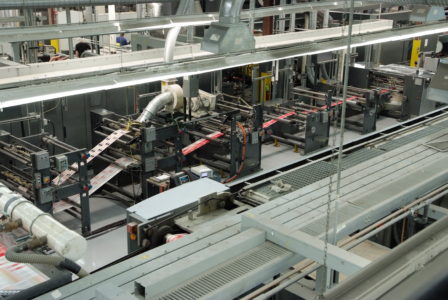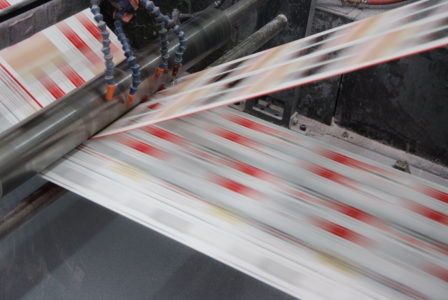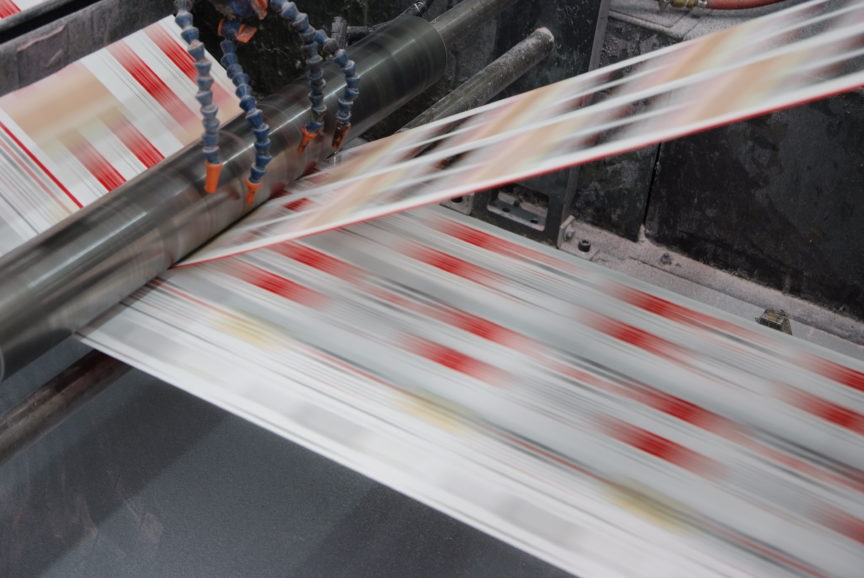“In 2020, I cut a lot of things out of the budget. I didn’t cut any marketing budget.” Adam Lefebvre
Specialty Print Communications (SPC), a third generation family-run, regional, midwestern printing company has been through the good days, the challenging days, the commodity days and the last several years, “we are thriving” days.
SPC is a forward looking national, single-source solution provider to direct marketers. The company continuously reinvests in people and technology, including complex inline hybrid manufacturing. They provide their customers a broad array of leading edge marcom executions for acquisition and retention programs.
In 2001, the executive team at SPC determined they could no longer survive on low quality, low cost printing because it was commoditized and would put them out of business. To change the business model, they committed to providing high-end print that would require the latest, best equipment. And then they decided that impactful, color designed, personalized direct mail was going to be their focus. In 2006, it was time to bring in inkjet personalization. And in 2018, the company pushed their inkjet capabilities much further with a standalone inkjet press.

Adam LeFebvre, President of Specialty Print Communications discusses the company’s not-so- traditional transition to inkjet.
Kimberly — How did your newest inkjet technology help transform SPC’s business?
Adam — The device unlocked a completely new way to provide quality and full variability. We were now able to take the technology to market and talk about new campaigns and better programs that our customers could use to talk more strategically to their customers.
We knew our market really well and which press would deliver the quality they needed. Our plan was to use inkjet technology to enhance what we already provided.
Inkjet enabled improved time to market and full “4-color across the sheet” variability.
KM — What inkjet presses do you have?
AL — Two Canon ProStreams, one Canon ColorStream, one Canon Varioprint i300, and lots of other black laser technology, all cut sheet.
In addition much of our volume is run on our web and half web with our Kodak S20 and S10 4.25” inkjet heads

KM – How did you justify the investment?
AL — Initially, we waited for the manufacturers to be able to deliver a press that could print the kind of work that we do, at advertising and brand marketing quality. And the conversation used to start with “where’s the crossover between running litho [lithographic printing] versus inkjet?” My answer is always there is no crossover. Not in our business. We believe strongly in the power of personalization and the importance of relevant messaging. It was never about a lower cost to manufacture, it was always about a better response rate.
At the end of the day, there was no clear financial justification. There was my personal belief that our team could provide an expanded offering within the current business we had. We had no intention to get into new business with inkjet. We’re the experts at direct mail advertising and that’s the area we were going to stay with.
KM— Does inkjet complement or compete with the rest of your production portfolio?
AL — It complements. We use inkjet personalization across the platforms on almost every piece of the billion plus pieces of mail that we produce every year. We believe that personalized relevant marketing materials, enabled by inkjet, are more powerful than generic materials.
KM — What are the challenges in promoting inkjet capabilities?
AL — The challenge for us to talk about inkjet has a lot to do with who’s ready to take on the burden of marketing using real intelligence to provide real relevance. Today, our clients are stretched so thin that they haven’t engaged their IT department to think about large scale, data driven marketing initiatives for the future. Too often, they’re too busy running point of sale operations and making sure that their registers ring.
The challenge we see in the market is still finding which companies are ready to do this. All marketers aren’t ready to use their data to achieve better results.
Our entire purpose is to utilize our customer’s marketing dollar and deliver their marketing campaigns the best, most effective way. We aren’t concerned about what method or technology we use to print their marketing materials, we want to provide the right solution for their applications or needs.
KM — Did you convert current customers or bring in new business with inkjet?
Adam — 100% new, incremental business from existing customers.
This was not a matter of “if we build it they’ll come.” I had a firm belief that our customers needed to leverage new technology. But, they weren’t aware of this. If we tried personalization using toner, it would be too expensive. With inkjet we unlocked a new way, from an economic perspective, to provide quality and variability to our clients’ marketing materials.
KM — What software applications are you using?
AL — Our platform combines BCC and Quadient Inspire for postal and content creation. We are doing millions of records and need the power of Inspire.
KM — Are you using inkjet for your own, SPC marketing?
AL – We have a substantial marketing budget and we believe it’s an integral part of our sales process. We’re an active, multi-channel marketer. We have to be in order to demonstrate we understand our customer’s business. It’s the most important thing we do to sell to marketers.
In 2020, I cut a lot of things out of the budget, I didn’t cut any marketing budget.
KM — What do you think is the most misunderstood aspect of inkjet technology?
AL — The biggest challenge is that it’s a new technology and the OEM’s each have different, specific capabilities; some are focused for transactional printing, others for direct mail and publishing and so on. This is a challenge during the sales process.
If you have doubts that your work can be done on a particular press, it probably can’t. It may get there eventually. You need to ensure that you are listening to the OEMs and make sure the they are fully disclosing all the things they know they don’t know.
For example, a printer called me to let me know they were getting a roll fed device. They currently have multiple, sheet-fed litho presses. I asked, “Do you have a forklift with a clamp attachment that allows you to move rolls of paper?” As a sheetfed house they didn’t know that they needed a clamp truck to move the rolls.
You need to ask, as you may have completely different environment.
KM — What advice would you give someone investing in inkjet for the first time?
AL – Ask your OEM sales manager to talk you out of the purchase, then buy it anyway.
Determine whether the OEM has you going somewhere they suggest or are they allowing you to fulfill your vision. Don’t plan on entering new markets because you have the device. Decide what you are going to do with it. That’s what is important.


